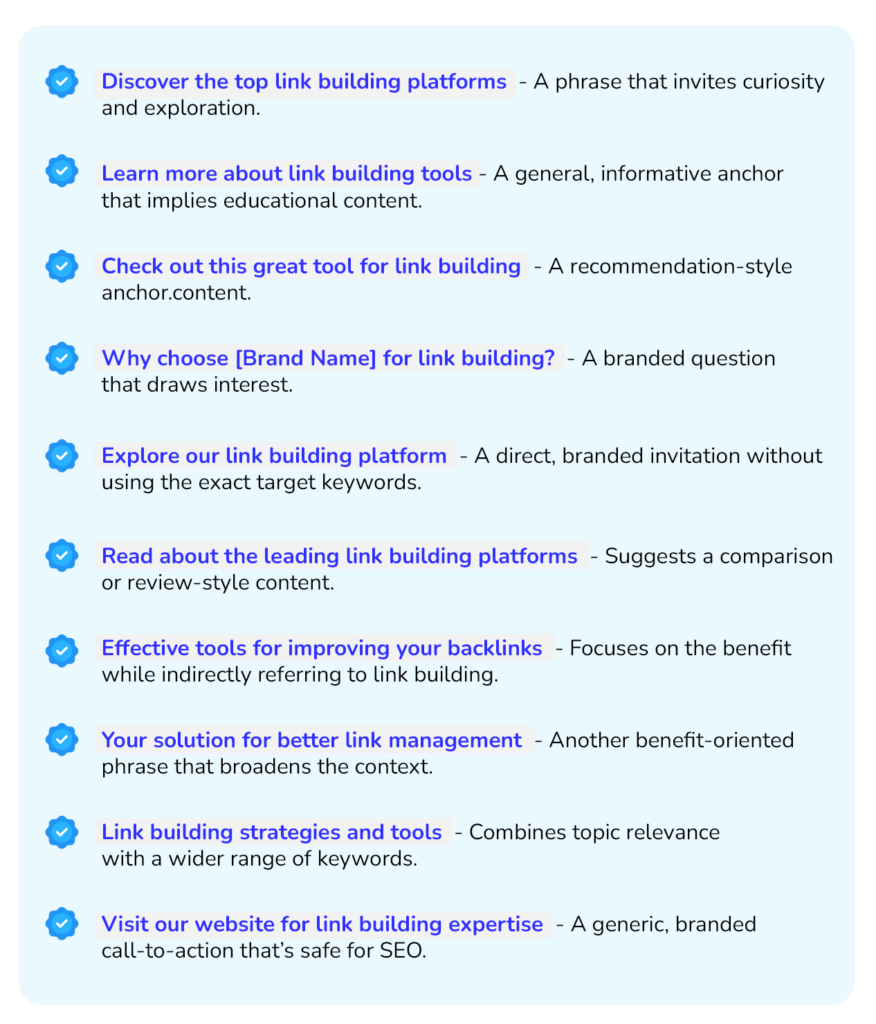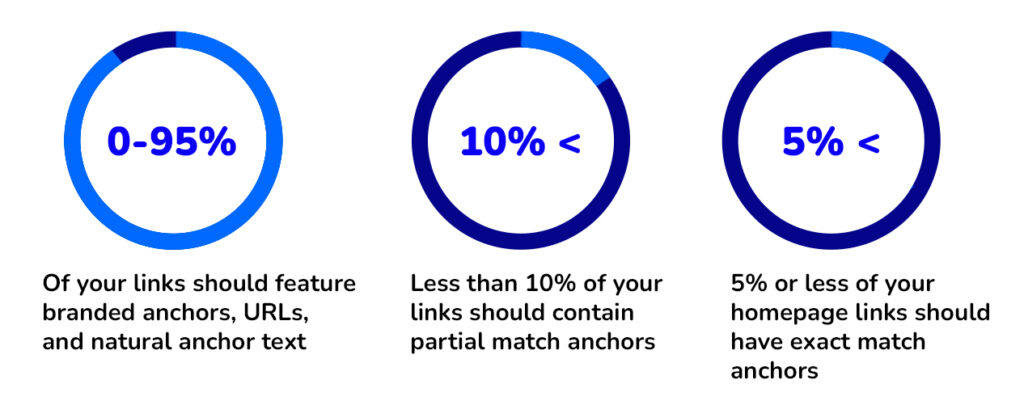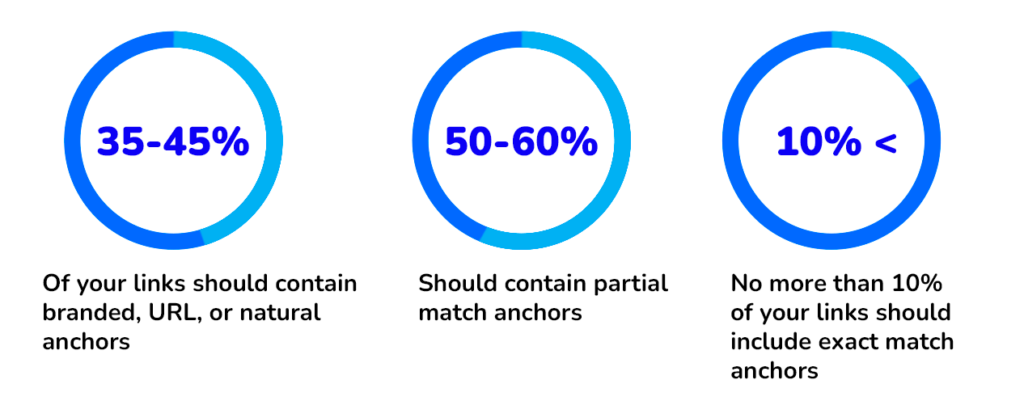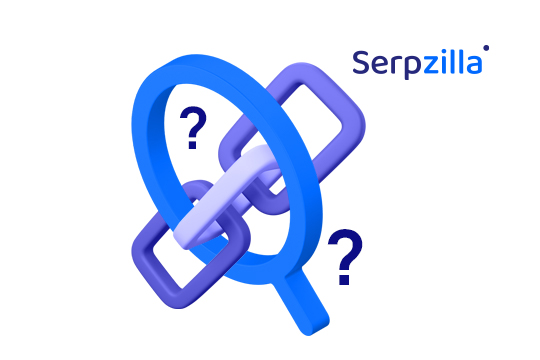If we were to frame the purpose of SEO in a single short sentence, it would be convincing the user to click the link to your page. The diversity and quantity of efforts SEO specialists make to see this happen is immense. But the majority of it remains unseen for the user themselves.
Ultimately, when they actually click that link, all they see is the link itself. Or, to be more precise, the anchor text, as it is the clickable, visible part of your hyperlink. So, for your user it all boils down to the anchor text. Is it attractive enough to click or not, does it make the user want to see what’s there or not.
But the audience aren’t the only ones judging link quality by its anchor text. Search engines evaluate it too, to conclude if your link is relevant to the content it follows to and the context where it is placed. This affects how your page ranks in SERP.
In this article, we will talk about anchor text in a lot of detail, see how they impact SEO and how you can improve them.
Types of Anchor Text
Anchor text is absolutely not as simple as the text of a link a user sees. There are multiple types of it, each working by its own rules. Differentiating these types and using them in your SEO strategy accordingly will help you make your anchors more effective. Let’s take a closer look at each type.
Branded Anchor Text
In this case, anchor text features your brand name. For example, “Serpzilla Official Website”. Links like that are used to increase brand awareness and are usually very low-risk. They typically link to relevant content and are very easy to place in a natural context.
Exact Match Anchor Text
These links have a word-for-word phrase in them that you’re trying to rank for. They can be very effective, but are very hard to build in a natural context. Overusing exact match anchors across many links is considered over-optimization by Google and can get you slapped with an algorithmic penalty. It is recommended to use them sparingly and to aim for long-tailed keywords when doing so. “Best link building platform” is not as safe as “How to use guest posts for link building”.
Partial Match Anchor Text
These anchors include a keyword or phrase that you’re ranking for or its slight variation, and some additional words. For example, while ranking for ‘link building platform’, we can have ‘top-rated link building platform in Europe’. Such anchors are considered slightly less risky, but you should still aim for diverse and long-tailed keywords.
Generic Anchor Text
These anchors are independent of domain and context and generally refer to user behaviors. For instance, “read more”, “click here”, “official website”, etc. SEO-wise, they are as much as ineffective, because they provide nothing for search engines to judge the relevance of context and content.
Naked Link Anchor Text
This type uses the actual link as its anchor, like serpzilla.com. It is considered quite neutral in terms of usefulness, as it always looks natural. If the link text features something like a brand name, it also provides search engines with enough context for relevance evaluation.
Image Anchor Text
This is the anchor text you put in the ALT attribute of an image link. It can be a powerful SEO tool, as Google gives a good weight to properly optimized images when it calculates the rankings.
Compound Anchor Text (Brand + Keyword)
This type combines a brand name with a key phrase, for example Serpzilla’s Ultimate Guide to Link Building. It’s one of the most useful types of keywords as it links your keyword optimization with your brand strategies, balancing your SEO with branding.
Article or Page Title Anchors
Another relatively safe type of anchor. It tends to be naturally descriptive and is usually easy to place within an organic context. As it repeats the name of an exact article or page, it also is highly relevant to the content you’re linking. Example: Types of Keywords and When to Use Them.
How Anchor Text Impacts SEO Performance
Anchor text gives search engines a lot of contextual signals based on which they determine several important parameters of a link. If you create anchor texts with these rules in mind, your backlinks become that much more effective.
- Influence Relevance Scores
Search Engines analyze your anchor text on the subject of whether it is relevant to the content where it is placed, to the content where it is linking to, and to a particular user search query.
Example:
Imagine you have a guest post about link building 101 for people with little SEO experience, and it has this passage:
The ‘backlink strategy Basics’ is an article title anchor that leads to a page with the same name and a highly relevant context article. It is also placed within a guest post on the matching topic of SEO and link building basics. All of this signals to Google about a high degree of relevance in relation to the linked content and a good match for queries related to ‘backlink basics’.
TIP: it is recommended to use “target=”_blank” value for the target attribute. This way, there’s a fair chance the user will keep the new tab opened and return to your website after exploring the original page.
2. Influence Page Authority
Anchor Text actually influences how much link juice is passed through the backlink. This point is closely connected with the previous one. The higher is the relevance score that Google establishes for the link, the more page authority the link passes to your website.
3. Natural vs. Unnatural Anchor Texts
There are several signs Google easily picks up to determine your anchor texts as unnatural:
- Overuse of exact-match keywords across backlinks that lead to your site
- Links that don’t align with context where theory are placed and content they lead to
- Overuse of rich keyword anchor text
Example:
It would be a mistake to use ‘best link building platform’ across multiple links leading to our site, even if they’re contextually relevant. If you rank for ‘best link building platform’, you should avoid repeated passages like:
- Here’s the list of best link building platforms
- Hi friends, I think I have found the best link building platform
A more natural set of anchor texts for ‘best link building platform would look like this:

Anchor Text and Penalties from Google
Proper use of anchor text can significantly improve your SEO, but it works both ways: if you overlook anchor text best practices, you can end up with Google Penguin Sanctions. The Penguin algorithm is designed specifically to deal with manipulated backlinks.
It is updated regularly and is ever becoming more sophisticated. It easily picks up on overuse of direct-match anchors in links, low-relevance link and keyword stuffing in anchors. If you receive this algorithm penalty, it is recoverable, but may take a lot of time and manual effort, and your rankings will likely still not recover to the prior-sanction level.
Anchor Text Type Distribution
If you want to make your SEO more positively impactful, it is important that you observe a certain ratio of anchor text types your backlinks use. It is also important to note that this ratio is quite different for your home page and your inner website pages, such as particular product pages, blog posts, category pages, etc.
Here are recommended anchor text ratios for your home page:

And here are good Anchor Text Distribution ratios for your internal website pages:

Best Practices For Using Anchor Text in SEO
- Use Descriptive Anchor Text
Anchor text should provide an accurate and concise description of the page the user ends up on when they click on the link.
Example of good, descriptive anchor text: Serpzilla’s 2024 Research of Link Building Strategies: a White Paper.
- Avoid Over-optimization and Keyword Stuffing
Use the anchor text type ratios above to get a more diverse, natural backlink profile. Remember that direct-match anchor overuse and rich keyword anchors are very easy to spot. It’s not worth risking your efforts and getting a Google Penguin penalty.
- Keep Anchor Text Natural and Contextually Appropriate
Ideally, the anchor text of your link should be a natural part of your text. It’s good if it flows well with the rest of the text and is a part not only of a sentence, grammatically and speech-wise, but also an integral part of the entire story and informational set behind the text.
For example: AI can greatly enhance your SEO content creation process, if used properly. But ChatGPT’s capabilities aren’t limited to just content generation. You can use AI in your link building campaigns for outreach, analysis and research.
- Diversify Anchor Text Across Links
Use a combination of various Anchor Text types as well as different wording.
- Pay Attention to Surrounding Text
Building your anchor into the surrounding context is vital. The so-called ‘co-occurent text’ is something Google also pays attention to. It is useful to place co-working keywords from your semantic nucleus in the co-occurent text.
For example: If you’re optimizing for ‘Backlink Types’, use adjacent keywords in the co-occurent text: a list of tools and backlink profile tips for Different kinds of backlinks.
- Use Anchor Text to Improve User Experience
UX is now given such a prominent role in SERP calculation, that all of your SEO aspects should be aimed at its improvement, anchors no exception. Make sure your anchors are clear, descriptive, have no double meanings, aren’t misleading the user, and avoid clickbait at all costs.
Internal vs External Anchor Text
Internal anchors are used in hyperlinks that lead from one page of your site to another. External anchor text refers to backlinks that lead to your site from other sources. Rules and best practices for the two differ.
The Role of Internal Anchor Text in Site Structure
Internal links are used for better navigation and can be used to quickly guide your site visitor to priority pages. Their anchors should add value to this effort. For example, on a landing page that is supposed to take your user to a registration form, a good anchor text for the form link would be: register here for a free 30-day trial.
A well-balanced system of internal anchors allows you to distribute page authority throughout the site and helps search engines to properly crawl your site, understand which pages you give more priority to. A good evaluation of your navigation and site structure by search engines places you higher in SERP.
How External Anchor Text Impacts Backlink Quality
External links help you get link juice from other sites and work for your DA (Domain Authority). A diverse, properly balanced pool of anchor texts, well-integrated in the source material and highly relevant, passes far more link juice to your website.
The picture below demonstrate the difference for #1 and #20 ranking pages. As you can see, the vast majority of backlinks are no match at all. This means that anchors are very diverse and well-integrated in the source content. The difference is only within the match sector.
Optimizing Anchor Text for Better SEO
If you have a working backlink profile, it means that you have a lengthy and diverse pool of anchor texts, divided by types, used in links internally and externally. It becomes quite a bulky system that needs constant maintenance and improvement.
- Conduct Anchor Text Audits
It is vital to see if you’re using the proper ratio of anchor text types and quickly disavow potentially harmful links when necessary. Keep your anchors sorted by type, keywords and context. Another important analysis aspect is to sort out well-performing anchors and scale their pattern.
- Tools for Monitoring Anchor Text Distribution
Tools like Ahrefs, Semrush, Majestic and Google Search Console all can help you get a clear idea about the distribution, ratio and performance of your anchors. You need details on how many links of each type are used and whether the ratio balance between the types is observed.
How to Fix Anchor Text Issues
If you notice harmful patterns, such as overuse of certain anchor text types, keyword overstuffing or others, it’s time to fix them.
- Diversify constantly
Coming up with new variants of workable anchor texts should be a constant activity.
- Keep adjusting internal links
Internal links are the fastest to fix and you can also try out different new anchors on them.
- Disavow bad links
If you notice that there’s a potentially harmful disbalance, disavow links to bring the overall ratio and distribution to a more natural ratio.
- Include anchor text changes in your outreach
To change and improve anchors for valuable external backlinks, make sure that you constantly reach out to respective source owners with suggestions.
Conclusion:
Anchor text is a powerful instrument in the hands of a knowledgeable SEO specialist. It can work both ways: it can enhance your SEO if worked properly, or it can ruin a lot of it, if neglected. Keep a diverse anchor text pool, observe a good anchor text type ratio and distribution and constantly monitor and improve your anchor texts using the best practices and tips from this article.








